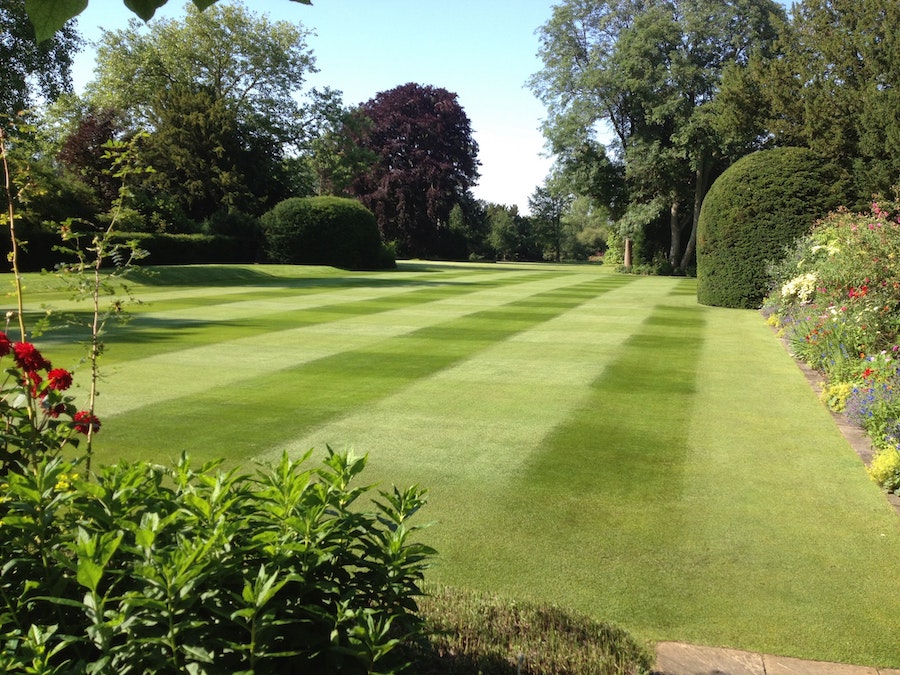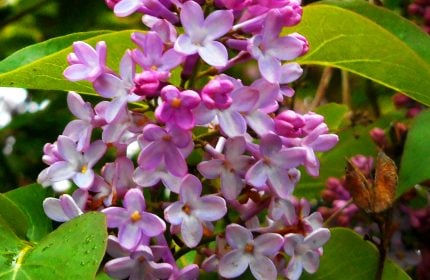Expert tips for bringing lacklustre lawns back to life this autumn
Our lawns have had a tough summer, but grass is one of the most resilient plants on earth and with a little TLC can be easily revived.
Here, lawn specialist David Hedges-Gower, author of Modern Lawn Care, explains what has been happening both above and below ground during the scorching summer months, and offers some top tips for getting your grass back to a healthy green state as soon as possible…
Give soil some air

Grass needs air and water to thrive
The combined heat and drought will have shrunk the soil – and grass hates dried and compacted soil. It needs air and water to thrive and maintain strong root systems.
So once the heat passes and the soil stops baking, start autumn renovation below ground with some aeration, because the key to any plant health is good working soil.
“Don’t follow the advice to go around digging into the lawn with a garden fork,” says Hedges-Gower. “Your mission is to decompact the soil, not just add some holes and using a solid tined garden fork will not achieve this.

Use a hollow-tine aerating fork
“Instead, use the tools designed for the job. Hollow-tine aerating forks and machines do exactly what your lawn needs; they remove cores of soil without further compressing what’s left and this creates those essential small channels for improved root development, water percolation and nutrition longevity.”
A machine can aerate a small-medium (250m²) lawn in around 20 minutes. A hollow tine fork takes longer but is still fine for a small area.
Don’t worry that the grass is dead

Grass that looks like hay should recover
Because, it’s absolutely not. Any healthy grass will not have died below ground. The dead brown leaves are simply what happens when it shuts down as the mercury rises and the plants’ own reserves are exhausted.
Autumn rains will soon see green growth reappear. But those dead blades of grass on top will have created some excess thatch that you now need to sort out, so you’ll need to scarify the lawn to get rid of it.
Remove debris too

Scarify your lawn
For small areas, you can get by with a wire rake, but this will never scarify as well as a powered ‘bladed’ machine. A purpose-designed scarifying machine will slice through the shoots, leaves and stolons (or runners), maximising the grass’s ability to regenerate from the re-emerging plants. Some patches may need the addition of new grass, and as you are improving conditions in the soil and on the surface you can also do some overseeding.
Choose between a blend of natural species (bents and fescues, or what is often referred to as a ‘luxury lawn mix’) or a dwarf ryegrass mixture for increased wear and tear.
Control moss

Get rid of moss
Whether you are doing a renovation or maintenance scarification, now is the perfect opportunity to apply moss treatment. Remember to do this following scarification, not before, so that the moss killer can kill the moss plants and spores at the base of the grass.
Feed it

David Hedges-Gower feeds his lawn
Your lawn may have stopped growing before the long dry spell, and been living off of its own food reserves since – so will now need feeding. But what do you feed it, and how much?
Over-feeding should not be too much of an issue this autumn, but in these conditions you should avoid a high-nitrogen quick-release fertiliser. Instead, use a feed that has a small amount of phosphate and potassium, as well as nitrogen.
A well-balanced feed for these conditions would be something like a 15-5-12 (nitrogen/phosphorous/potassium) fertiliser applied at 25g/m². This will give you just enough nitrogen to last for 10 weeks or so.
Slow down on mowing

Mow less frequently and set blades higher
Growth should be starting to slow down, so you can begin reducing the regularity of mowing, and at the same time gradually increase the cutting height.
The Press Association
Latest posts by The Press Association (see all)
- Beatles documentary Let It Be to be released on Disney+ - April 16, 2024
- How to keep your money safe – as criminals ramp up AI tactics to steal consumer data - April 16, 2024
- Seasoned marathon runners give their best race day tips for first-timers - April 16, 2024
- What are heat pumps and could they help your home save energy? - April 15, 2024
- Trailer for Bridgerton season three teases new friends-to-lovers romance - April 12, 2024





















